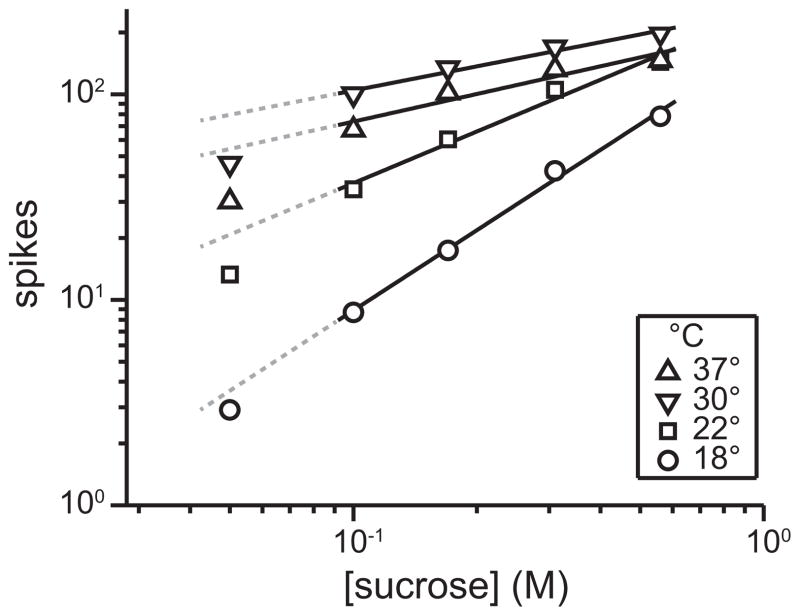Figure 3.
Effect of stimulus temperature on neurophysiological activity to sucrose in taste-sensitive neurons in the mouse hindbrain. Data represent mean responses (spikes per unit time; ordinate) across 22 sucrose-oriented neurons to a sucrose concentration series (abscissa) tested at relatively cool (e.g., 18°C) to physiologically warm (37°C) temperatures. Data are plotted in doubly-logarithmic coordinates. Slopes for least-squares fits (solid lines) to activity to 0.1, 0.17, 0.31, and 0.56 M sucrose measured at 18°, 22°, 30°, and 37°C are as follows: 1.44, 0.94, 0.39, and 0.50. Dashed lines extend fits for comparison against activity to 0.05 M, a near-threshold concentration of sucrose (Treesukosol and Spector 2012). Reprinted from Wilson and Lemon (2014) with permission from the publisher.

